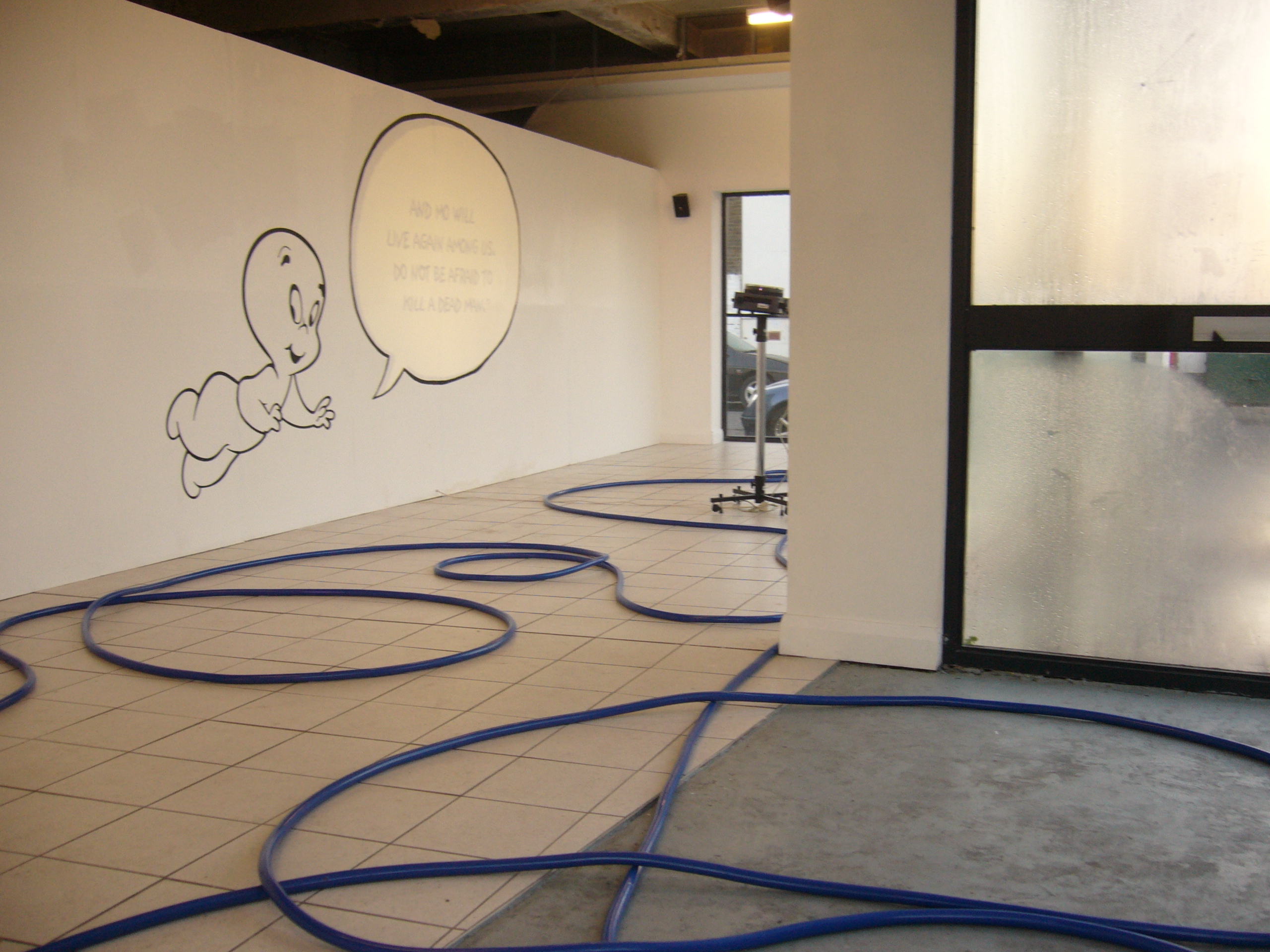A Good Host Is a Ghost is an exhibition of work by Francis Frederick. The title is borrowed from a little-known work by Marcel Duchamp involving a gold matchbox and chocolates wrapped in green foil, which was once encountered in a book.
Although there are six works in the show, the gallery itself remains almost empty. A blindingly bright, pink light shines in through a small window and across the entire length of the space, reaching the street through the window at the opposite end. A re-edit of the last scenes from Takeshi Kitano’s 1997 film Hana-bi is shown on a monitor on the floor, the audio filling the gallery as a soundtrack to the exhibition. The film is overlayed with subtitles that, instead of translating the dialogue and action, describe another artwork: a cartoon about five exhibitions.
Blue hosepipes coil across the gallery floor and along the top of the windows, creating a continuous, light rain that transforms the glass façade into a wall of water that washes away onto the pavement. Drawn across a long, white wall is the familiar outline of Casper the Friendly Ghost with a blank cartoon speech bubble, acting as a screen for projected texts based on an anecdotal story retold within the novel Mount Analogue by René Daumal.
Characters and narratives are adopted as containers to be filled with new content and references that far remove the work from the original material. Other works take the form of light interventions that use only the surface of the space, but which through the most basic means, activate the entire space of the exhibition as a material. Two works that are even more immaterial are the Ferrero Rocher chocolates handed out at infrequent and unspecified moments (intended as an echo of a film that will be made in and around Monaco on the French Riviera, also known as Le Rocher) and the music taken from the DVD menu of the 1967 Playtime by Jacques Tati, which lasts for under half a minute and will be played at a few irregular intervals over the course of the exhibition. Such works are easily missed, but their presence is still felt.
The name Francis Frederick is the latest in a series of ‘identities’ created by the artist Olivier Castel to author his artworks, taking the artist’s name, as well as the title of the artwork, as a material in itself. A contraction of Francis Picabia and Frederick Kiesler, Francis Frederick recalls two pencil drawings, one abstract coiling line by the artist Picabia, and one a sketch by the architect Kiesler for the design of his Endless House.





